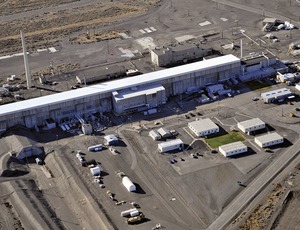
In a plan to save what it says will be between $7 million and $9 million annually over the next five years, CH2M Hill Plateau Remediation Co. is changing its subcontracting policies in hiring firms to help manage nuclear-waste remediation and demolition at the U.S. Energy Dept.'s Hanford site in central Washington. The changes come as cleanup budgets at the former weapon-production complex are expected to flatten or decline.
The company, a unit of CH2M Hill Cos., manages cleanup of Hanford's 75-sq-mile Central Plateau, a onetime major production area. In its first five-year contract, which ended in 2012, the firm chose subs from a list of 11 preselected companies to accelerate work. In its second contract, subcontracting will be more of a competitive-bid process. "This allows us to go back to the marketplace to look for fresh ideas," says Vicki Bogenberger, the firm's CFO. She says it will still award at least 17% of contracts to small businesses.
The firm also plans to hire as employees, if their skills are needed, 55% of subcontractor workers assigned to it for more than two years. The change could affect a workforce of more than 500. Previously, subcontractor employees who worked long-term with CH2M Hill staff cost more because of overhead markup and payments to subs, the firm says.
CH2M Hill promises "full transparency" with subs and employees. Any notice of intent to offer employment would first go through the subs. The firm, which does not anticipate a change in workforce size, is set to bid a contract worth about $250 million for the ongoing surveillance and maintenance of defunct facilities.
"This is a transformation in how we are doing subcontracting," Bogenberger says. "The first five years, we worked on integrated teams, and now we are moving to a more traditional, task-based approach with incentives." A DOE spokesperson says Hanford's cleanup budget, when announced later this year, is expected to be about $2 billion annually. But that figure could change due to remaining uncertainties regarding federal budget sequestration.


Post a comment to this article
Report Abusive Comment